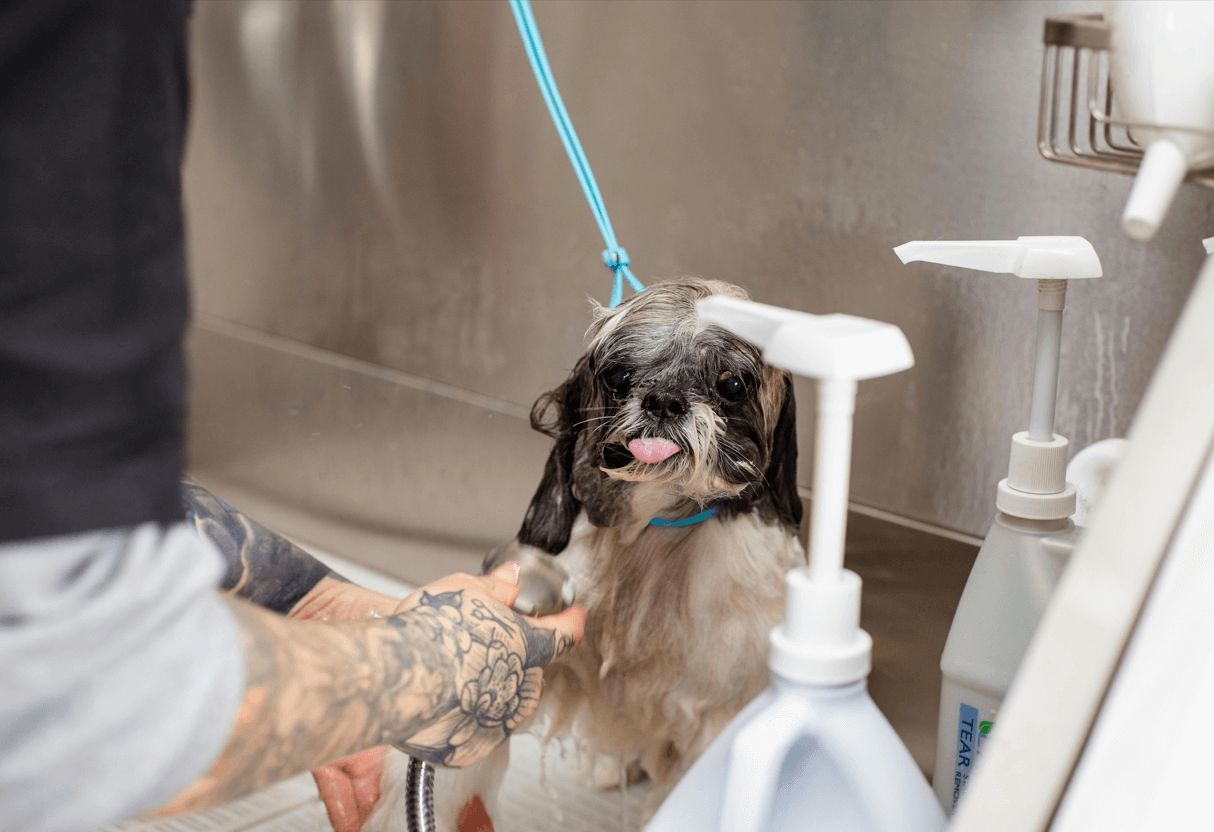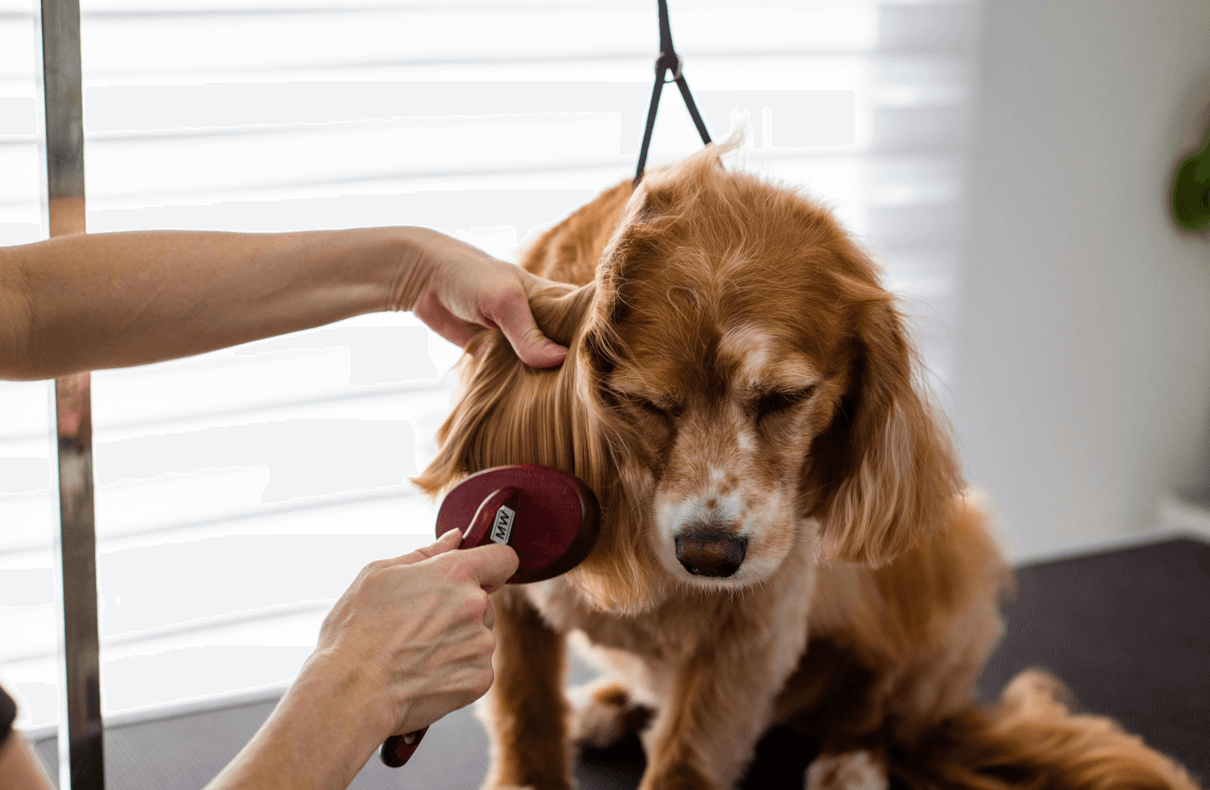For many dogs, grooming often becomes a stressful experience, especially for those predisposed to anxiety or fear. Whether it be the vet’s office, the sound of the clippers, or merely handling for extended periods, dogs can get fidgety, anxious, or even display signs of aggression. In such cases, a dog sedative can come in handy for a peaceful and secure grooming experience. However, it is prudent to pick an appropriate sedative for your dog—one that is both effective and safe. In this guide,

we explore the best dog sedatives for grooming, their advantages and potential side effects and how you can use safely and responsibly. We also offer answers on natural remedies, expert opinions and key tips on how to manage grooming anxious dogs.
Why do dogs need sedatives during Dog Sedatives for Grooming?
Before we delve into the top options available, it is important to understand why sedation might be crucial during Dog sedatives for grooming. Some dogs struggle with higher levels of stress and fear to the point of developing antisocial behaviors, including excessive barking or whining; aggression (biting or snipping); wanting to run or be released; trembling and excessive panting; drooling and vomiting.
A sedative can make the grooming experience less traumatic for the pet and the groomer or a pet owner- that is, where the veterinarian is absent. The different types of dog sedatives for grooming. There are several options to consider when it comes to sedatives for your dog.
a. Acepromazine
- What it is: Acepromazine is a sedative commonly used by veterinarians. It relaxes dogs by suppressing their central nervous system.
- How it works: It diminishes the dog’s awareness of its surroundings, assisting them in remaining calm in stressful situations, such as grooming.
- Pros: Very effective and useful for anxiety dogs.
- CONS: It can make you drowsy, lethargic and, occasionally, has unpredictable side effects, such as a drop in blood pressure.
b. Diazepam (Valium)
- What it is: Diazepam, or Valium, is an anti-anxiety drug used in dogs for sedation.
- How it works: It increases the levels of a neurotransmitter called GABA, which calms the brain.
- Pros: Eases anxiety and promotes muscle relaxation.
- Cons: Causes sedation, ataxia (loss of coordination), when used improperly, aggression.
c. Trazodone
- What it is: Trazodone is an antidepressant frequently given to dogs for anxiety disorders.
- How it works: It works by modulating serotonin levels in the brain, calming dogs without causing sedation.
- Pros: At lower doses, non-sedating, good for anxiety control
- Pros: It’s used to support sleep, relax tight muscles and relieve anxiety. Cons: Side effects may include drowsiness or gastrointestinal issues.
Over-the-Counter Sedatives
For less serious cases of anxiety, OTC (over-the-counter) sedatives are offered. These are typically mild herbal soothers or tranquilizers to help keep your pup calm through grooming sessions.
a. Benadryl (Diphenhydramine)
- What it is: Benadryl is an antihistamine that can be used to treat allergies in dogs, but it also has mild sedative properties.
- How it works: This one blocks histamine receptors in the brain, which causes drowsiness.
- Pros: Readily available, relatively safe in small doses.
- Cons: Can cause dry mouth, dizziness, or urinary retention if overused.
b. Melatonin
- What it is: Melatonin is a hormone the body makes that helps regulate sleep cycles.
- How it works: Melatonin can help make anxious dogs feel less anxious, resulting in calmer and more relaxed dogs.
- Pros: All natural, nonsedative, soft.
- Cons: Not as fast-acting as prescription sedatives.
Natural Sedatives
If you do not want to take prescription drugs, there are natural remedies you can try. These products often work wonders, especially for dogs showing mild anxiety or stress.
a. CBD Oil
- What it is: CBD (Cannabidiol) oil comes from the hemp plant and is used widely as a treatment for a variety of canine ailments like anxiety.
- How it works: CBD interacts with the endocannabinoid system, which is responsible for regulating stress and anxiety levels.
- Pros: All-natural, no side effects associated with traditional sedatives; can be used long-term.
- Pros: Different dogs respond differently, and dosage can be tricky.
b. Thundershirt
- What it is: A Thundershirt is a type of clothing designed to be worn by a dog that applies gentle pressure to the dog’s torso for a calming effect.
- How it works: The pressure replicates swaddling, which has been proven to reduce anxiety in dogs.
- Pros: Not invasive, no drugs, no house arrest, no monitors.
- Cons: Not effective for all dogs, especially those with severe anxiety
When and how to use Dog sedatives for grooming
safely
Psychoactive drugs, like sedatives, must be planned for and used responsibly. Here is how you can make sure your dog is safe and happy while being groomed.
Consult Your Veterinarian
It’s also important to discuss it with your veterinarian before giving your dog any sedative. They will assess your dog’s health and prescribe an appropriate sedative. Use your vet for the correct dosages and how to avoid complications.
Understand Dosage
Dosage is critical with any sedative. Giving your dog too high a dose of a sedative can cause dangerous side effects, including low blood pressure, heart trouble, and even overdose. Be sure to heed what your veterinarian says to keep your dog safe.
Do not leave your dog unattended during grooming
Even if you’ve sedated your pooch, you should keep a close eye on your dog while you groom. Sedation does not render your dog oblivious to its surroundings. Monitor their breathing, heart rate, and general demeanor to see that they are comfortable.”
Provide a Calm Environment
Establishing a calm and quiet grooming environment can help your dog feel less anxious as well. Maintain a quiet and calm environment — no loud noises or sudden movements or unknown people. You may even want to put your dog to soothing music or pheromone diffusers to help your dog calm down.
Avoiding Sedatives: Natural Solutions for the Pet Grooming Blues
Sure, sedatives can help, but there are also natural ways to help soothe anxiety in dogs during grooming. These techniques also often work just as well and are less risky.
Regular Grooming Sessions
One of the best methods for reducing anxiety is to get your dog accustomed to grooming. Grooming sessions begin slowly and gently so your dog can learn tolerance and trust. Step the time and the intensity of it up slowly as they learn to adapt. For more grooming, please click here.
Positive Reinforcement
Reward with treats, praise, and toys during grooming. Positive reinforcement will create an association between a pleasurable experience and grooming itself and can help alleviate the fear and stress of the process.
Calming Products
There are calming products available on the market— sprays, collars, and diffusers that dispense pheromones intended to soothe your dog. Combined with grooming, these can help to create a calmer environment and experience.
Conclusion on Dog Sedatives for Grooming
While sedatives can help to make grooming a less stressful experience and should only be considered after advice from a veterinarian or a behaviorist, long-term control measures should be explored, and that is identified as a training and behavior framework. Whether you choose a prescription, an over-the-counter option, or a natural alternative, the safety and well-being of your dog should always come first. So, with the right sedative and techniques in place, grooming sessions can turn into a more positive experience for both you and your furry friend.
FAQ: Dog Sedatives for Grooming
Are groomers safe for dog sedatives?
Yes, dog sedatives are safe for grooming when given appropriately under the administration of a veterinarian. It is crucial to select the appropriate sedative and adhere to proper dosage guidelines.
Am I able to use human sedatives for my dog?
So, Is it Safe to Use Human Sedatives for Dogs? Make sure to use pet-specific medications to keep them safe.
Signs Your Dog Needs Sedation for Grooming
In some cases, however, your dog may be so afraid, anxious, or aggressive during grooming—growling, attempting to escape, or trembling uncontrollably—that sedation is required.
How long does a sedative last in a dog?
How long a sedative will work depends on what sedative is used. For some, it might wear off in a couple of hours, whereas for others, it may take longer to wear off. Always refer to the guidelines or your vet for specifics.
A natural alternative to sedatives for grooming?
Yes, calming sprays, pheromone diffusers, or Thundershirts (non-sedating options) can help anxiety.

